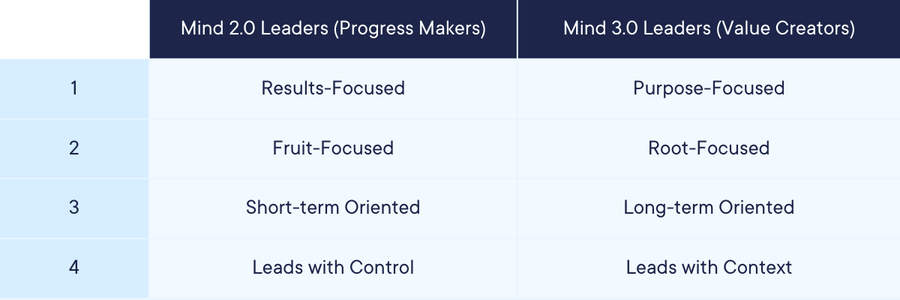
The Keys to Elevating Your Leadership with Vertical Development
December 04, 2023 Written by Raymond Lee

Compare Providers
Download our outplacement comparison sheet
Request Pricing
Compare our rates to other providers
In January 2001, over 20 years ago, the Harvard Business Review published an article titled “Level 5 Leadership: The Triumph of Humility and Fierce Resolve”. The article paid homage to Jim Collins, best-selling author of Good to Great, which sold over four million copies and became a top business book for leaders and executives around the world.
The article described Collins’ five-year journey wherein he and his team analyzed the histories of 28 companies in a rigorous research study to determine why some companies were good and others were great. This article focused on one of the companies, Kimberly-Clark, and their leader Darwin Smith.
The answer to their question was simple: Level 5 Leadership.
After decades of leadership research into what truly makes great leaders great, why do companies still struggle with identifying and investing in programs to develop their leaders?
Josh Bersin, a thought leader in the human capital space, wrote a recent article titled “Companies Have Been Neglecting Their Leadership, And It Shows”.
In his research, Bersin correlates all human resource investment areas against business growth and, at the top, leadership development scores the highest. In other words, companies that focus on developing leaders, not just promoting them, far outperform their peers.
He writes that in an era of significant inflation, pressure for hybrid work, and a highly competitive labor market, companies continue to neglect their leadership development.
Bersin continues to write that only 25 percent of companies believe their leadership development is delivering high value to the company, and only 24 percent of companies say their model is “up to date” or “highly relevant.”
As we live in a world of increasing uncertainty, employers expect more from their leaders, particularly more with an emphasis on power skills versus technical skills. Leadership development is also expected to occur much further down the organizational chain, as the Harvard Business Review cites in “The Future of Leadership Development”.
What does the future development of leaders look like in the twenty-first century? How do we develop Level 5 leaders in the modern era?
The answer is Vertical Development.

Dr. Ryan Gottfredson is a leadership and management professor at the College of Business and Economics at California State University-Fullerton and has been researching leaders for over a decade. He helps organizations vertically develop their leaders to improve organizations, leaders, teams, and employees by improving their mindsets.
Gottfredson describes Vertical Development as a unique form of personal growth that focuses on enhancing your internal operating system and developing the sophistication of your cognitive, emotional, and relational abilities. Beyond simply acquiring new skills, which he defines as horizontal development, vertical development is elevating the way you think and perceive. It is all about improving one’s psyche as opposed to their talent and abilities.
Vertical development is in essence a pathway to becoming a Level 5 leader or, as Gottfredson describes in his research, a Mind 3.0 leader.
However, as adults, few professionals ever reach this level of development. Researchers Keegan and Lahey reported in their book Immunity to Change that over 64 percent of adults never vertically develop beyond the first stage of adult development.
Vertical development begins with a rewiring of an individual’s internal operating system. This rewiring expands how people think and essentially increases their capacity to handle failure and stressful situations. If a person can identify and recognize when they are triggered and are able to widen their window for tolerance, the net effect will be recognizing failure and stress as normal, natural signs of learning and opportunities for personal growth and development.
In his vertical development model, Gottfredson explains that people who operate at different vertical altitudes possess internal operating systems that are programmed for the attainment and fulfillment of different needs. Specifically:
- Mind 1.0: Wired to be safe, comfortable, and feel like they belong (i.e., A “Good Soldier”)
- Mind 2.0: Wired to stand out, advance, and get ahead (i.e., A “Progress Maker”)
- Mind 3.0: Wired to contribute, add value, and lift others (i.e., A “Value Creator”)
What Kegan and Lahey’s research indicates is that 64 percent of all adults and seven percent of executives operate from Mind 1.0 as “Good Soldiers,” while 35 percent of all adults and 85 percent of executives operate from Mind 2.0 as “Progress Makers,” and one percent of all adults and only eight percent of executives operate from Mind 3.0 as “Value Creators.”
What this means is that most organizational leaders have an internal operating system wired to focus more on themselves, either standing in (Mind 1.0) or standing out (Mind 2.0). It is only the truly exceptional leaders who have refined their internal operating system to be more focused on creating value for others, something greater than themselves. It is these leaders that Jim Collins refers to as “Level 5 Leaders.”
How exceptional is this shift? As mentioned, only one percent of all adults and eight percent of executives operate at the Mind 3.0 level.
Consider the following common differences between Mind 2.0 and Mind 3.0 leaders, and ask yourself: Which type of leader is going to be able to navigate an organization more effectively into the future?

Simon Sinek was asked in an interview why he didn’t trademark “Start with Why.” He simply said that he gets the most pleasure witnessing leaders and organizations from around the world ask the question, “What is our Why?” If he trademarked “Start with Why,” he would be limiting the ability of creating greater good in the world. That is an example of Mind 3.0.
The takeaway here is that if there is a will to achieve Mind 3.0 status, or Level 5 status as determined by Jim Collins back in 2001, there is certainly a way to get there. It takes personal commitment and a determination to shift one’s thinking and perspective.
In need of outplacement assistance?
At Careerminds, we care about people first. That’s why we offer personalized talent management solutions for every level at lower costs, globally.


